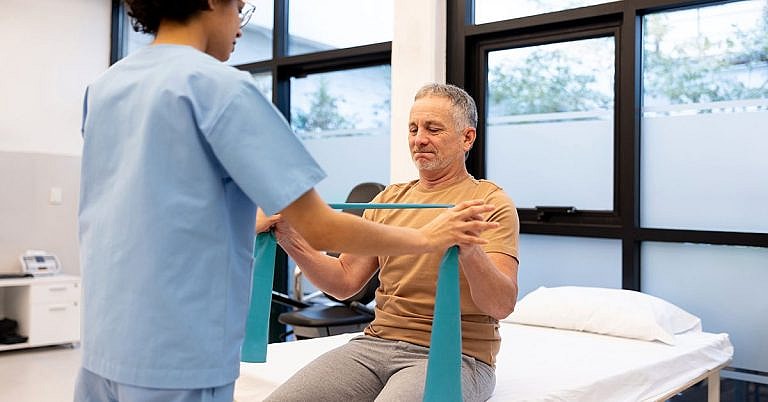What is malaria?
[trp_language language=”en_US”]
Malaria is one of the world’s most serious health problems today. According to a recent World Health Organization (WHO) estimate, 409,000 people died from the disease in 2019, and 229 million individuals became sick for the first time.1 Despite the fact that malaria is curable and preventable.
If you reside in or plan to visit a region of the world where malaria is a serious threat, learning about the disease can go a long way toward ensuring your safety.
So, let’s learn more about malaria, what signs to look for, and how to protect yourself and your loved ones.
What is malaria?
Malaria is a parasitic infection caused by the Plasmodium parasite. Malaria is caused by five different Plasmodium species, which are carried between people via the female Anopheles mosquito.2 When one of these mosquitos bites a malaria patient, the Plasmodium parasite is taken up by the mosquito. After that, it can pass the parasite on to the persons it feeds on. 3 Malaria can be transferred through infected blood transfusions, organ transplants, and sharing needles since it is transmitted through blood.3
Malaria parasites have a hard time surviving in colder climates. 3 As a result, African countries with tropical climates provide the ideal habitat for Plasmodium to thrive and spread throughout the year. In 2019, African countries accounted for 94 percent of malaria infections and fatalities..1
Malaria is a deadly disease. Doctors, on the other hand, can treat it with a prescription drug that kills the Plasmodium parasite. 3 With fast treatment, it’s possible to make a full recovery. So it’s essential you know what to look out for and when to see a doctor.
What are the symptoms?
Malaria symptoms can start after 7 days of being infected. The most common initial symptoms are:2
- Fever
- Chills
- Headache
- Nausea
- Vomiting
- Muscle pain
- Diarrhea
More severe symptoms can include:2
- Acute renal failure
- Pulmonary edema
- Generalized convulsions
- Circulatory collapse
There are several conditions with similar symptoms to malaria. This can make it harder for doctors to diagnose.2 The best way of diagnosing malaria is for a doctor to check your blood under a microscope. 3
What can I do to protect myself and my loved ones?
Familiarize yourself with the Centers for Disease and Prevention (CDC)’s malaria guidance. These can be helpful for both visitors and residents of countries where there’s a high risk of malaria:3
- Take anti-malarial medication before traveling to high-risk areas.
- Speak to your doctor about bringing malaria treatment medication with you on your trip to ensure a supply in case you need it.
- If you get sick within 1 year of returning from a trip, tell your doctor about the trip and ask to be tested for malaria.
- Use mosquito repellent spray, particularly at night.
- Wear long-sleeved shirts at night, or sleep under insecticide-treated bed nets.
Choosing the right preventative malaria medicine can depend on your travel plans, medical history, age, allergies, and pregnancy status.3 So make sure you speak to your doctor before taking any medicine to prevent malaria.
Is there a malaria vaccine?
WHO recommends the new malaria RTS, S vaccine for children living in high-risk areas. Studies have shown it can reduce the risk of severe malaria in young children by 30% and has a good safety profile.4
By understanding the malaria symptoms and knowing when to see a doctor, you can better protect yourself and your family from malaria.
- WHO. “World Malaria Report 2020: 20 Years of Global Progress and Challenges.” Accessed 28 October 2021.
- WHO. “Malaria.” Accessed 09 November 2021.
- CDC. “Frequently Asked Questions (FAQs).” Accessed 9 November 2021.
- WHO. “WHO Recommends Groundbreaking Malaria Vaccine for Children at Risk.” Accessed 10 November 2021.
[/trp_language]
[trp_language language=”ar”] [wp_show_posts id=”5276″] [/trp_language]
[trp_language language=”fr_FR”] [wp_show_posts id=”5280″] [/trp_language]
**Question: What is Malaria?**
**Answer:**
Malaria is a life-threatening mosquito-borne disease caused by Plasmodium parasites. It is a major public health concern, particularly in tropical and subtropical regions of the world.
**Key Symptoms of Malaria:**
* Fever
* Chills
* Sweating
* Headache
* Muscle pain
* Nausea
* Vomiting
* Diarrhea
**Transmission of Malaria:**
Malaria is transmitted through the bite of an infected female Anopheles mosquito. When the mosquito bites an infected person, it ingests parasites present in the bloodstream. These parasites then mature and multiply within the mosquito’s body, eventually infecting its salivary glands. When the infected mosquito bites a new person, the parasites are injected into the bloodstream along with the mosquito’s saliva.
**Parasite Lifecycle:**
Once in the human bloodstream, Plasmodium parasites invade red blood cells and reproduce. They mature and rupture the red blood cells, releasing more parasites into the bloodstream. This cycle repeats, leading to the characteristic periodic fever and chills associated with malaria.
**Types of Malaria:**
There are several species of Plasmodium that can cause malaria, the most common being:
* Plasmodium falciparum
* Plasmodium vivax
* Plasmodium malariae
* Plasmodium ovale
**Diagnosis of Malaria:**
Malaria is diagnosed through a blood test that detects the presence of Plasmodium parasites.
**Treatment of Malaria:**
Malaria is treated with antimalarial medications, such as:
* Artemisinin-based combination therapies (ACTs)
* Chloroquine
* Mefloquine
* Malarone
* Lariam
**Prevention of Malaria:**
Malaria can be prevented through:
* Using mosquito nets
* Applying insect repellent
* Taking antimalarial medications
* Reducing mosquito breeding grounds
**WHO Classifies Malaria as High Burden or Low Burden:**
The World Health Organization (WHO) classifies regions with malaria transmission as either high burden or low burden based on the number of cases and the severity of the disease.
**Conclusion:**
Malaria is a serious and potentially fatal disease that poses a major threat in tropical and subtropical regions. By understanding the symptoms, transmission, and prevention measures, individuals can protect themselves and their communities from this devastating disease.








Genetic stuff
AI can this be genetic